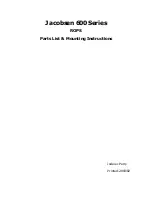
Additional notes
75/92
10
Additional
notes
10.1 Extended measuring range
The extent of the measuring range of a Tensiometer is influenced by
3 factors:
1. The bubble point
2. The vapour pressure (boiling point)
3. The boiling retardation
10.1.1 The bubble point of the porous cup
The bubble point of a porous, hydrophilic structure is specified by the
wetting angle and the pore size. The cups used for UMS
Tensiometers have a bubble point far beyond the measuring range
(8.8 bar). Therefore, the bubble point has no limiting influence.
10.1.2 The vapour pressure of water
At a temperature of 20°C the vapour pressure of water is 2.3 kPa
against vacuum. With an atmospheric pressure of 100 kPa and at
20°C the water will start to boil, or vaporize, as soon as the pressure
drops below 2.3 kPa against vacuum, i. e. 97.7 kPa pressure
difference to an atmospheric pressure of 100 kPa - the Tensiometer
drops out.
The measuring range (at 100 kPa/20°C) is limited to -97.7 kPa.
Atmospheric pressures announced by meteorological services are
always related to sea level. Thus, the true pressure in a height of 500
meters over sea level is for example only 94.2 kPa although 100 kPa
are announced. Then, the measuring range at this height (at 20°C) is
even limited to -91.9 kPa.
If the soil gets drier than the maximum possible measuring range the
reading will remain at this value and then drop gradually towards
zero. If the soil gets as dry as the bubble point a spontaneous
equalisation with the atmospheric pressure occurs. Air enters the cup
and the reading will rapidly go to zero.
















































